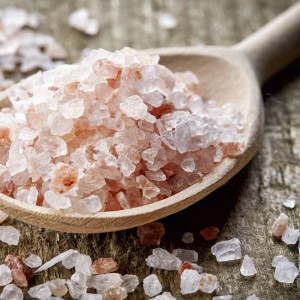Spring is generally thought of as a time of awakening and first steps. As the spring sprouts make their first appearance, I like to think about some of the first steps we can take towards better health.
Usually it’s the small steps that we take, over time, that contribute to big shifts in our daily habits.
You may decide to upgrade the sweetener in your coffee or the processed snacks in your pantry this spring. Today, I’d like to invite you to focus on one of my favorite pantry staples: salt.
The good news is, I’m not going to ask you to reduce your salt intake today.
Not only is salt vital to our sensation of taste, flavor and enjoyment of food, salt is an essential nutrient that’s crucial for mineral balance, metabolism, digestion, brain function and muscle formation.
Without salt, we would literally die of thirst!
Unfortunately, not all salt is created equal. Here’s the truth about table salt and my best recommendations for the right salts to stock your healthy kitchen pantry..
The Trouble With Table Salt:
Table salt is a highly processed form of sodium-chloride. The refining process strips the salt of all of its minerals (the good stuff). To replace the natural iodine salts that are removed during processing, potassium iodide is added back in. And to prevent the salt from clumping, salt refiners add anti-caking chemicals like aluminum. The white color lost during processing is then restored with the use of a bleaching agent.
Real Salts Found In Nature:
(1) Sea Salt – A minimally processed salt collected in ocean water. The natural trace minerals remain intact, including ionized sodium, magnesium, calcium, potassium and selenium, plus trace elements such as copper, iron, zinc, manganese, and chromium.
A second benefit to sea salt is that the sodium content is much lower than that in table salt. Sea salt manufacturers claim an average of about 33% less sodium than table salt.
While there has been some concern with ocean water contamination, my own research on the topic has led me to the conclusion that high quality brands ensure thorough analysis and testing for heavy metals and contaminants.
(2) Makai Sea Salt – With a sodium content similar to other sea salts, Makai Salt is found in mineral-rich sea water naturally derived from 2,000 feet below the surface of the ocean and remains untouched and pure through its transformation into sea salt. More expensive than Sea or Himalayan Salt, it is a great option for someone who wants sea salt with added precautions taken to ensure that there is no ocean water contamination.
(3) Himalayan Salt – This salt has 27% less sodium than table salt. Originating in the Himalayan mountains, this is actually a land salt. While it will not contain as many minerals as the sea salts mentioned, it’s a great alternative for people looking to avoid salt from the sea.
Considered in ancient time to be a “gift of the Gods”, salt is not the enemy! Real salts found in nature are an excellent addition to your healthy pantry.
Simple Action Plan:
Toss the processed table salt (and processed foods salted with table salt!). Instead, stock your pantry with your choice of one (or more!) of the real salts found in nature.




